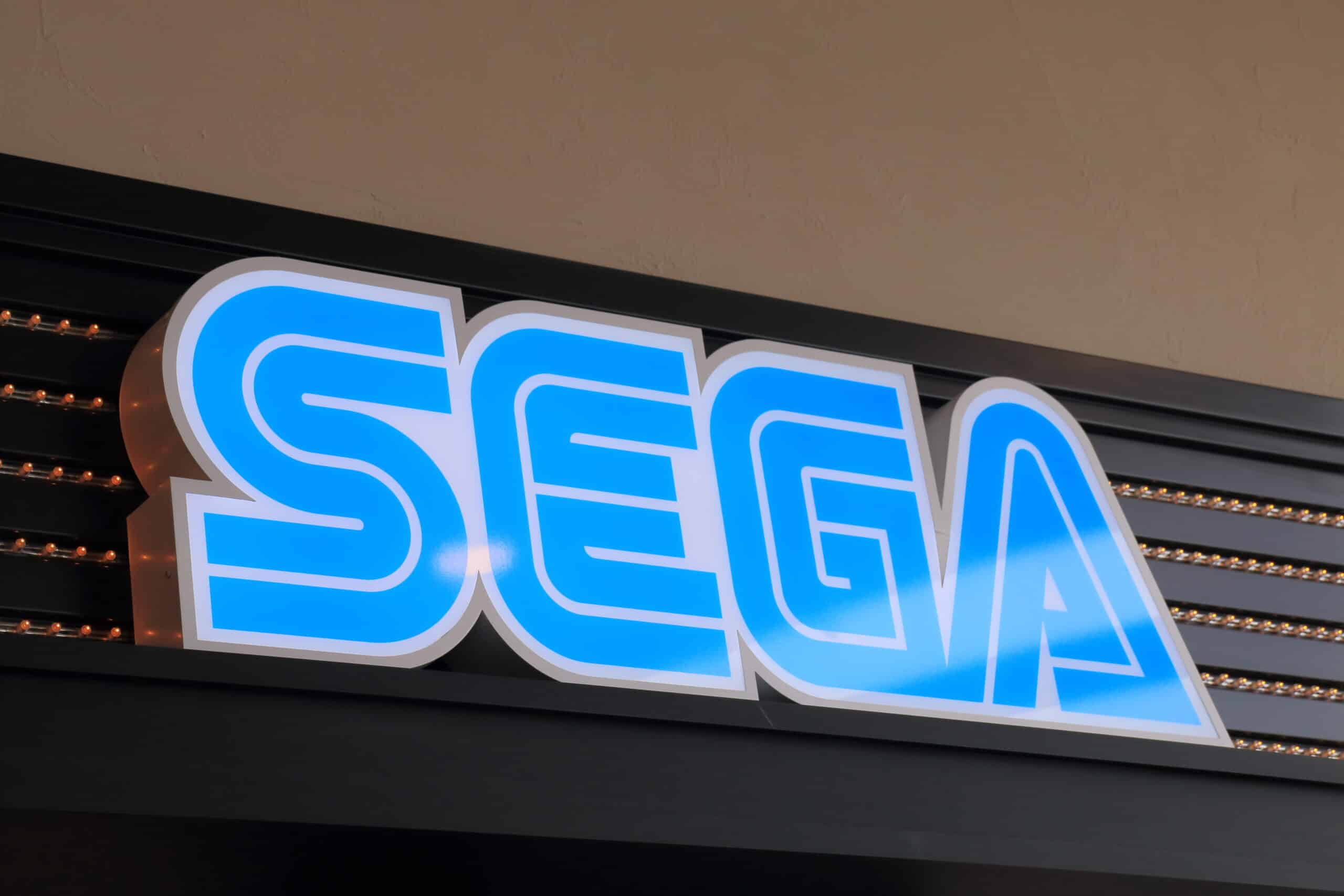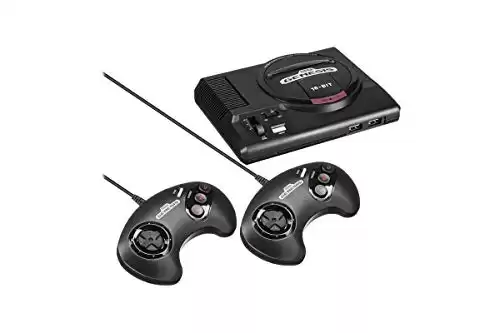If you look at Sega today, it might be hard to believe they were once one of the biggest names in gaming. In its prime, Sega was a console juggernaut and even rivaled Nintendo in the early years of the console wars. Sega is still a part of the conversation, but they don’t make consoles anymore. They focus mostly on third-party game development for their legendary franchises like Sonic the Hedgehog.
History of Sega
Origins
The origins of Sega can be traced back all the way to Standard Games in the 1940s. In the beginning, they created coin-operated slot machines to entertain GIs on Hawaii military bases. As they grew, they relocated to Japan and rebranded as Service Games. Funny enough the name Sega comes from this iteration as it was used as an abbreviation for Service Games.
Over the years, Service Games went through several iterations before it finally merged with Rosen Enterprises in 1965 and became Sega Enterprises. That year they released the arcade game Periscope, a submarine shooter simulator, which was very popular at the time. Sega had several other hits during the arcade boom like the successful Zaxxon (1982) and Out Run (1986). They also licensed legendary titles like Pac-man and Frogger.
Out of the Arcade, Into the Home
Sega was very profitable during the arcade boom of the 80s netting well over $200 million dollars in revenue. Sadly, the arcade era was ending and Sega had to set its sights on the next big thing. That thing ended up starting the console wars between Sega and what would be their biggest rival Nintendo. Sega kicked off this fight for home entertainment dominance with the SG-1000, their first real home console.
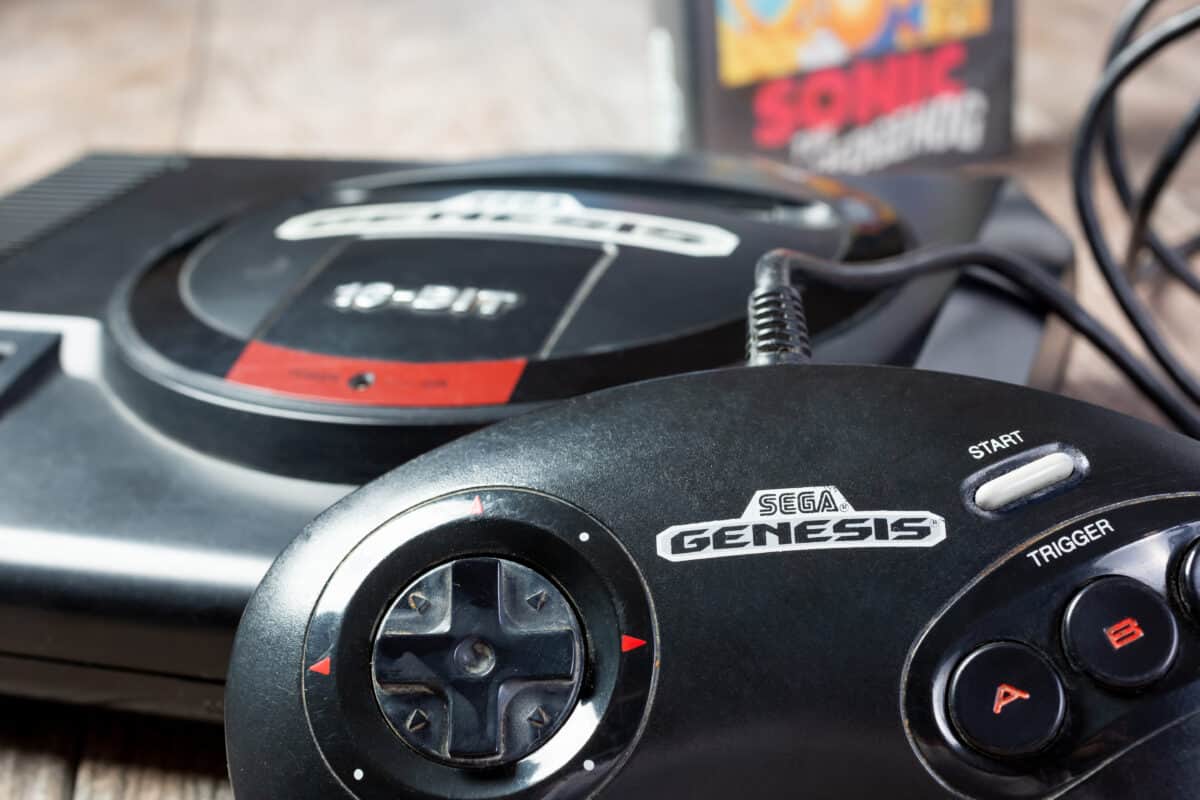
Genesis was a faster, easier option for gamers and was Sega’s most popular console.
SG-1000
The SG-1000 was released on the exact same day as the Nintendo Famicon, or Family Computer, and blew past sales expectations in the first year. They originally projected to sell around 50,000 by the end of 1983 but the end number of units sold was around 160,000. Between its initial release and 1988, it sold 1.4 million units making it a financial success. However, this console didn’t make the splash that Sega was hoping for.
The original SG-1000 had a TMS9918A video display processor that rendered 2D sprite graphics. It had an 8-bit Zilog Z80 processor and 1 KB of RAM. The controller, the SJ-200 joystick, was attached to the SG-1000. Eventually, Sega updated the console and released the SG-1000 II, which had a new design and controller, the SJ-150 joypad a closer analogue to Nintendo’s Famicom Controller.
The game’s lineup was solid. It had titles like James Bond 007 and Space Invaders, which brought the classic arcade game into the living room for the first time. Unfortunately for Sega, they couldn’t compete with more recognizable titles like Donkey Kong and Popeye on the Famicom. They even released a game called Congo Bongo, similar to Nintendo’s Donkey Kong.
Master System
The SG-1000 and SG-1000 II were fairly successful, but Sega was looking for more. So, in 1985, Sega decided to drop the name association and released the Sega Mark III, which fell flat during its Japanese launch. It upgraded the design and processing power but lacked memorable titles and didn’t really have anything that drew in players.
After this failure during the Japanese launch, the company rebranded the console as the Master System for the North American release. It still didn’t have the traction that Sega hoped, but it did introduce some amazing games like the first Prince of Persia, Alex Kidd in Miracle World, and of course, Sonic the Hedgehog. So, yeah, this is the console that first brought Sonic the Hedgehog into the living rooms of America.
Once again, however, Nintendo sold a lot more of its North American rebrand, the Nintendo Entertainment System (NES) than Sega did its Master System. This is a trend that we will see play out in every single generation. Sega released the Master System II, which was much more advanced than the NES, but by then, it didn’t matter. In North America, Nintendo was king, but the fight was far from over.
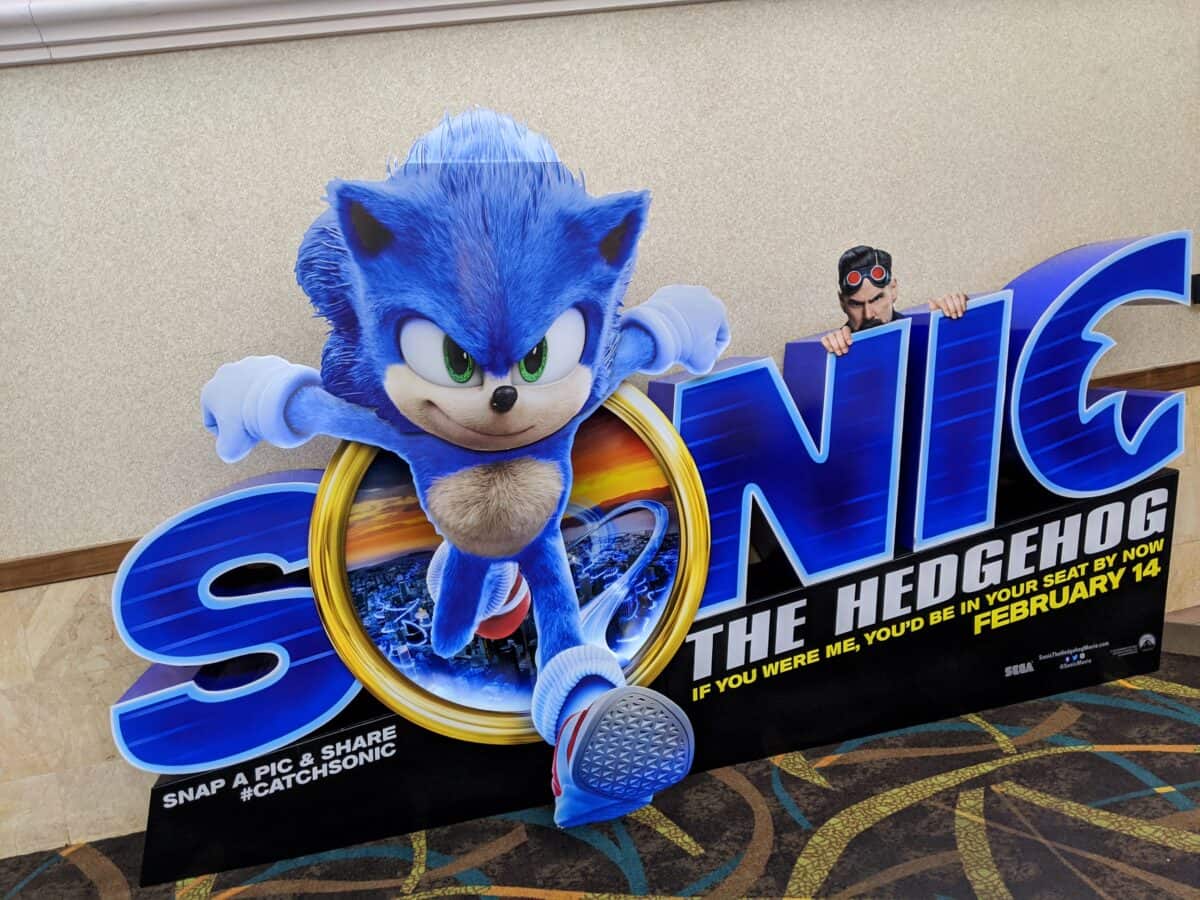
Genesis /Mega Drive
In October 1988, Sega landed a hell of a blow against rival Nintendo with the Sega Genesis, known as the Mega Drive, outside the US. Often regarded, rightfully so, as the greatest console Sega ever released, the Sega Genesis goes down in history as one of the most important consoles ever built. Sega started with a fresh design from the ground up. It had new, better control that felt good and had quick responsiveness. It was also the first 16-bit console, so it was faster and had more colors than before.
Despite its impressive power and lineup of 16-bit games, Sega Genesis still couldn’t compete with the Super Nintendo (SNES). Nintendo had been kicking Sega’s butt since the beginning of the console wars due to their stronger stable of titles and family-friendly marketing. Nintendo had marketed themselves as a family company, and they already had a great part of the market share when the Genesis was released, so Sega had to bring out the big guns in order to keep up.
Genesis Does What Nintendon’t
This is probably the Sega that everyone remembers, I know I do. To combat Nintendo ’s strength in North America, Sega sold itself as a faster, edgier option for gamers. Mario was slow and heavy; Sonic was fast and light. SNES didn’t show blood in fighting games; Genesis did. And Genesis had 16-bit, high-speed gameplay, Nintendidn’t (sorry I couldn’t resist!)
This push worked like gangbusters. Sega sold around 30.75 million units over the life of its many iterations. In addition to the original Genesis, Sega released the Genesis II and Genesis Nomad, a handheld console version. It also had many ill-fated peripheries that we will cover more in-depth later. They carved out a foothold in the US gaming market like they never had before. And Sega solidified a Mascot that would endure to this very day.
- The iconic SEGA Genesis console that defined a generation of gaming returns in a slick, miniaturized unit.
- The SEGA Genesis Mini console is loaded with 42 legendary games and is plug and play ready right out of the box!
- Box contents: Sega Genesis Mini console and 2 wired controllers, 40 games + 2 bonus games, power cable and USB adapter, and HDMI cable.
Sonic the Hedgehog
Sonic was the answer to Nintendo’s beloved mascot Mario. The Italian Plumber, and his friends Donkey Kong and Link, had propelled the NES and SNES into superstardom. Sega needed something that could compete with this enduring icon; the answer was Sonic.
Sonic was the anthesis of Mario in every way. At the time, most games didn’t have a save functionality, so players would have to quickly run through the initial levels to get to the better worlds. With Mario, this was a slow, plodding process, not so with the Blue Blur. Sonic picked up speed as he went, and the levels were designed to reward players who could utilize Sonic’s speed. Throw in some bright colors and cute animals, and presto! Instant mascot.
Public Response
With Sonic’s high-speed high jinks, the power of the Genesis, and Sega’s pull no punches attitude; the Sega Genesis has cemented itself in the pantheon of gaming history. But like we’ve seen before, Nintendo is king, and the SNES outsold the Genesis by selling almost 20 million more units.
They might not be in the console game anymore but their contribution to gaming is undeniable. We are going to go through the history of Sega, its many consoles, and their impact on gaming. For this list, we are just going with consoles in Sega’s original canon, no re-releases or new digital versions of the consoles will be considered. So, keep your hands and feet in the cart at all times, we’re in for one hell of a ride!

The Sega Game Gear is one of the few game systems that has managed to outperform its console counterparts.
Sega Consoles: Game Gear
While the Sega Genesis was blowing minds in the console wars Sega hoped they could compete with Nintendo’s foray into handhelds, the Game Boy. This came in the form of Sega’s Game Gear. The Game Gear was shaped more like a controller than the Game Boy and had much more impressive specs. It could play games in 16-bit and could even play games in color, which the first Game Boy could not.
If you guessed that this is the point where I tell you that Sega was once again defeated by Nintendo, you’d be right. Sega always set its sights on powerful hardware and a better gaming experience than the other consoles on the market. And in this way, they always achieved what they were after. But what they could never quite understand is the content piece of gaming. Most players don’t care about specs if the other system has better games. And Nintendo ALWAYS had better games.
The Game Gear was a cutting-edge handheld system, but it was before its time. Most developers weren’t ready to or interested in producing games up to spec for the Game Gear, so the library suffered In the end, Game Gear only ever sold 10 million units and then was quietly relegated to the dust bin of history.
Mega CD/Sega CD and 32X
Aiming to ride the success of the Genesis, Sega released two peripherals called Sega CD and 32x. Even though these are extensions of the Sega Genesis, they deserve separate consideration.
Sega CD
The Sega CD improved on the Genesis in so many ways that it can be a little reductive to call it an extension. In truth, it really was the 4th generation of Sega Consoles. This peripheral supported bigger, more detailed games. It also traded the Genesis Zilog Z80 processor for the Motorola 68000 which had 12.5 MHz over the Z80’s 3.58 MHz. As the name suggests, Sega CD played games off CDs instead of cartridges which meant it could play larger, more detailed games.
Unfortunately, this does mark the downturn for Genesis and Sega as a whole. Firstly, it limited sales to people who already had a Genesis, meaning it didn’t really expand its share of the market. Sales were abysmal, only 2.2 million units were sold, a large departure from the excellent sales of the original Genesis. This is also the console that brought us Night Trap and the infamous congressional hearings.
The 1993 Violence in Video Games Hearings
The game Night Trap was an FMV horror game about a group of teenage girls having a sleepover in a vampire-infested house. The player observes the girls in different scenarios, listens in on conversations and triggers traps to protect the girls from those who would do them harm. The game isn’t anything you wouldn’t see in the horror B-movies of the 80s. This, along with Mortal Kombat, was brought in front of the Senate committee on the subject of violent video games.
Some committee members like Connecticut senator Joe Lieberman believed that games with this much graphic violence should be out of reach for children. Several stores that catered to children, like Toys R Us, took the game down from their store shelves. Sega even stopped producing copies of the game in January of 1994.
Nintendo, ever the rival, even had their representative state that Nintendo was a family company and Night Trap would never exist on a Nintendo console. Someone should tell that to whoever ported it to Switch in 2018. Still, this only bolstered Sega’s reputation as an edgy company, and they were mostly happy to lean in.
32x
This was the last peripheral for the Sega Genesis console. There was a debate between the Japanese and American offices of Sega whether this should be a peripheral or a full-on new console. In the end, the peripheral was released in both markets. The 32x main upgrade was its ability to play 32-bit games, meaning it could play ROM cartridges with more color and bigger, more detailed game worlds.
The 32x was pitched to players as a cheaper alternative to the upcoming Sega Saturn console. They planned to run both consoles at the same time, but this isn’t how it worked out. The 32x add-on only sold around 800,000 units and quickly faded from public view.
Sega Saturn
The Sega Saturn was released as the much-awaited successor to Genesis. Sega had been teasing fans with their first new console in five years, so it was safe to say there was a fever pitch when the console’s release date was announced at E3 in 1995. This, now infamous announcement, was the first step in a long string of failures for the Sega Saturn.
At E3 1995, Sega announced that the Sega Saturn was available for purchase that very day. Eager fans rushed to retailers to get the sought-after console, the problem was retailers had no idea this was coming. Stores like Wal-Mart and Best Buy were so angry at Sega that they even refused to restock the Sega Saturn in some stores. In addition, Sony released the first PlayStation later that year for $100 cheaper than Saturn. And as always, Nintendo flexed its dominance with the Nintendo 64 which is, in my opinion, one of the greatest consoles of all time. Sorry, Sega!
Sega Saturn was also plagued with the main problem of its predecessors; it just couldn’t compete with Nintendo’s stable of games. On top of that, games were moving away from highly detailed 2D sprites and into the realm of 3D. Both Nintendo and PlayStation were pioneering in this space while Sega lagged.
They did try to catch up, but it wasn’t enough. They also didn’t make a new entry in the Sonic franchise. Sonic 4 had been long rumored, but Sega Saturn didn’t deliver. Sonic games did come out like Sonic R, a 3D racing game with Sonic characters, and Sonic 3D Blast.
In the end, due to bad decisions, a very bizarre and confusing ad campaign, and a lack of strong titles, the Sega Saturn went into terminal decline. It only sold a total of 9.3 million copies.
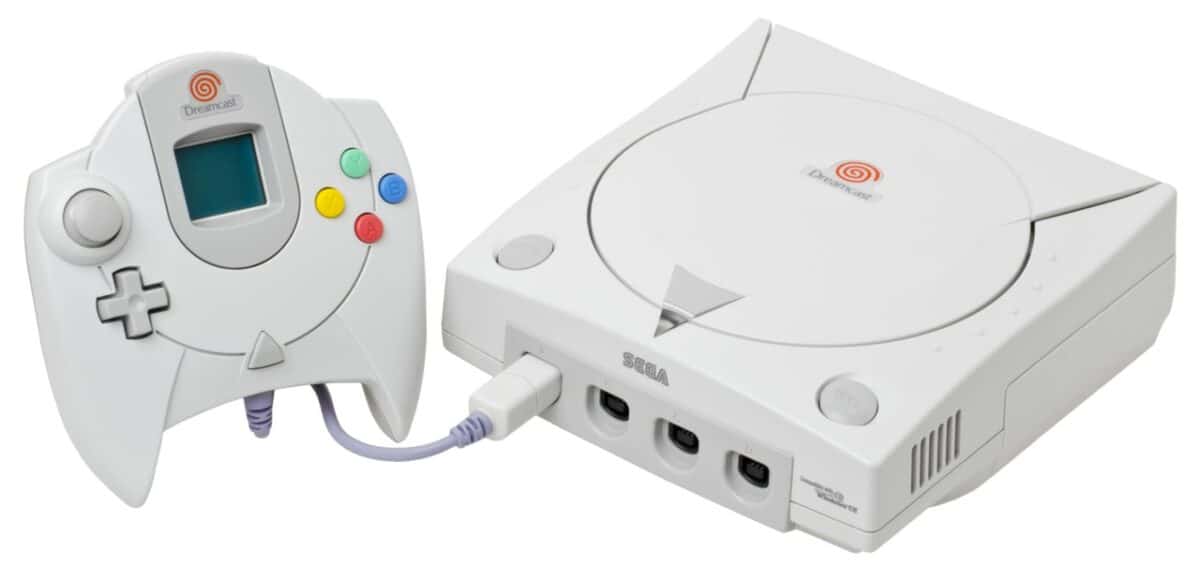
Although well received at launch, Sega’s Dreamcast but faced financial troubles and competition from popular Playstation 2.
Dreamcast
Sega had had a run of bad luck. Starting with the failure of Game Gear, Sega CD, and 32x, Sega was on the ropes. Rivals in the space like Sony and Nintendo were pulling away technologically and creatively. Things were not looking good for Sega. So, in one final effort to get back into the conversation, Sega released its Swan song, Sega Dreamcast.
The Dreamcast was released in 1998 and had some initial success. It had some amazing launch titles like Sonic Adventures which was a personal favorite of mine, and Soulcalibur. It also included a VMU attachment in the controller which doubled as a memory card and second screen. Games would use the VMU to show inventory, maps, or other HUD info.
Despite some great games and some cutting-edge features, the Dreamcast was trounced by the release of the PlayStation 2 and the new player on the scene, Microsoft’s Xbox. In the end, Dreamcast sold just 9.1 million units and was discontinued in 2001.
The Fall of Sega Consoles
Sega lost millions trying to compete in the console market and the decision was made to pull out of the console wars altogether. They are now a third-party developer who still have their hands on some legendary titles. They still produce new Sonic games, although to mixed reviews and they work with all the major console companies, even Nintendo. In fact, it was a rumor that Sega had been purchased by Nintendo but this isn’t true, they just get along a lot better than they used to.
Lasting Impact on Gaming
It is easy to look at the story of Sega as a tragic one. They seemed to always be just a few steps behind what players and even their own fans expected. But Sega has undoubtedly shaped the way that games have evolved over the years. Their edgy attitude showed the world that gaming isn’t just a little kid activity, it can be so much more. Sure, they weren’t the most highbrow titles, but they showed a capacity for more.
Sega also pushed the games industry technologically. Until Saturn, they always had the better tech. They may not have been able to capitalize on it, but they forced rivals to innovate. They didn’t pull their punches and weren’t afraid to be weird. That games industry owes a small part of its quirkiness to Sega.
Sega is still very much a player in the gaming industry. They have crafted some amazing games for new fans as a third-party developer. They have their share of ups and downs, but the video game industry wouldn’t be the same without them. One thing is for sure, Sonic Adventure 2 still slaps.
Up Next…
- The 7 Absolute Best Fighting Games for the Sega Genesis: Are you in the mood to get out your Sega Genesis? Need some new fighting games? Check these out!
- The 3 Absolute Best Sega Genesis Sandbox Games of All Time: We’ve picked what we believe to be the best – see if you agree with us!
- The Sega Genesis Mini 2 Launches Overseas Fall 2022: Find Out How You Can Get One: We can’t wait! See how you can get a Sega Genesis Mini 2!
Want to Retire Early? Start Here (Sponsor)
Want retirement to come a few years earlier than you’d planned? Or are you ready to retire now, but want an extra set of eyes on your finances?
Now you can speak with up to 3 financial experts in your area for FREE. By simply clicking here you can begin to match with financial professionals who can help you build your plan to retire early. And the best part? The first conversation with them is free.
Click here to match with up to 3 financial pros who would be excited to help you make financial decisions.
The image featured at the top of this post is ©TK Kurikawa/Shutterstock.com.
